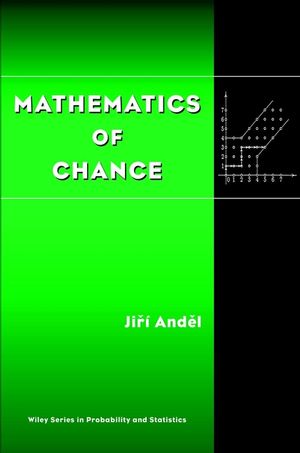Mathematics of ChanceISBN: 978-0-471-41089-8
Paperback
272 pages
February 2001
 |
||||||
Mathematics of Chance utilizes simple, real-world problems-some of
which have only recently been solved-to explain fundamental
probability theorems, methods, and statistical reasoning. Jiri
Andel begins with a basic introduction to probability theory and
its important points before moving on to more specific sections on
vital aspects of probability, using both classic and modern
problems.
Each chapter begins with easy, realistic examples before covering the general formulations and mathematical treatments used. The reader will find ample use for a chapter devoted to matrix games and problem sets concerning waiting, probability calculations, expectation calculations, and statistical methods. A special chapter utilizes problems that relate to areas of mathematics outside of statistics and considers certain mathematical concepts from a probabilistic point of view. Sections and problems cover topics including:
* Random walks
* Principle of reflection
* Probabilistic aspects of records
* Geometric distribution
* Optimization
* The LAD method, and more
Knowledge of the basic elements of calculus will be sufficient in understanding most of the material presented here, and little knowledge of pure statistics is required. Jiri Andel has produced a compact reference for applied statisticians working in industry and the social and technical sciences, and a book that suits the needs of students seeking a fundamental understanding of probability theory.
Each chapter begins with easy, realistic examples before covering the general formulations and mathematical treatments used. The reader will find ample use for a chapter devoted to matrix games and problem sets concerning waiting, probability calculations, expectation calculations, and statistical methods. A special chapter utilizes problems that relate to areas of mathematics outside of statistics and considers certain mathematical concepts from a probabilistic point of view. Sections and problems cover topics including:
* Random walks
* Principle of reflection
* Probabilistic aspects of records
* Geometric distribution
* Optimization
* The LAD method, and more
Knowledge of the basic elements of calculus will be sufficient in understanding most of the material presented here, and little knowledge of pure statistics is required. Jiri Andel has produced a compact reference for applied statisticians working in industry and the social and technical sciences, and a book that suits the needs of students seeking a fundamental understanding of probability theory.



